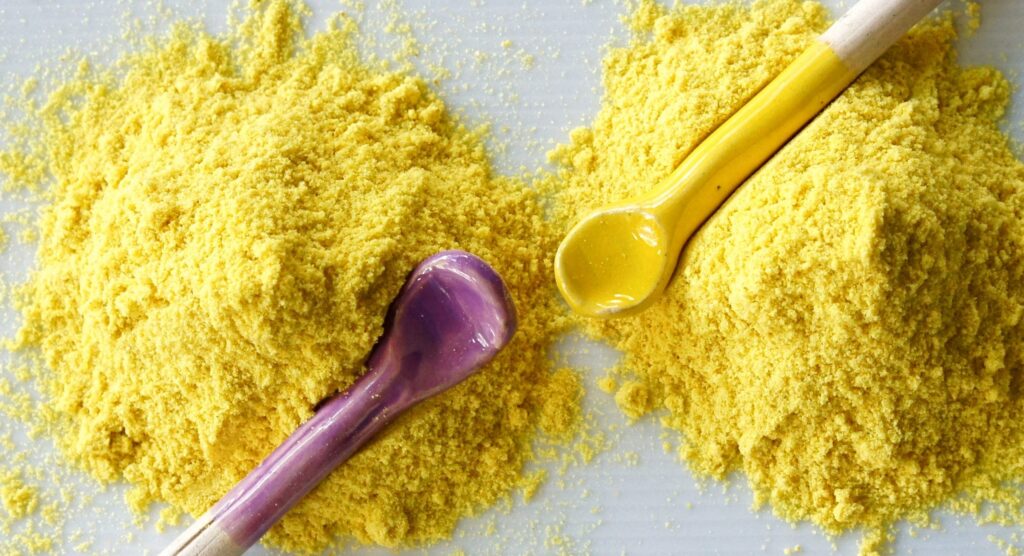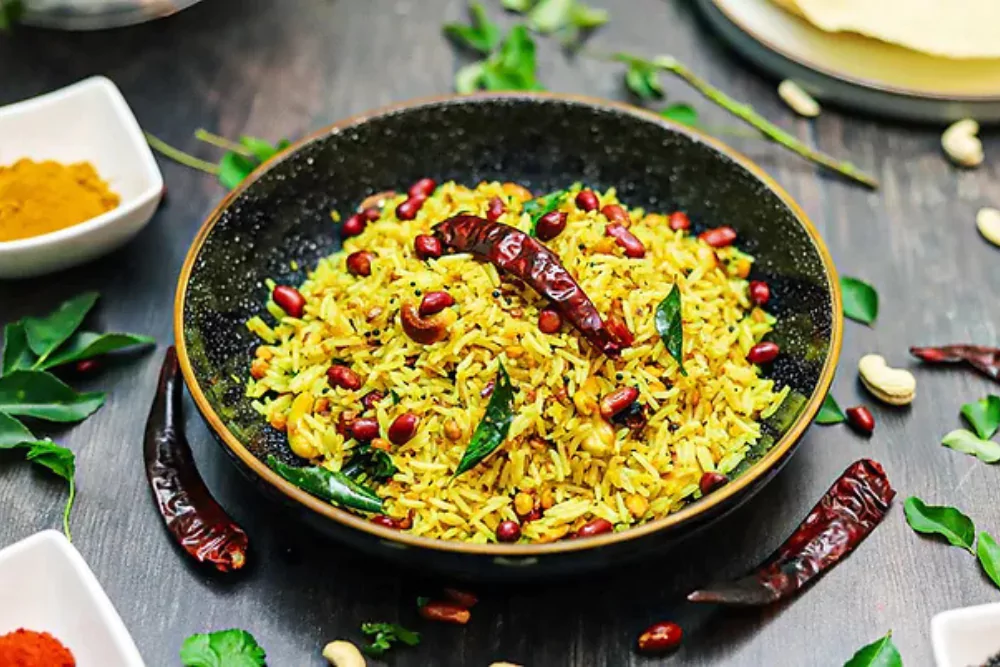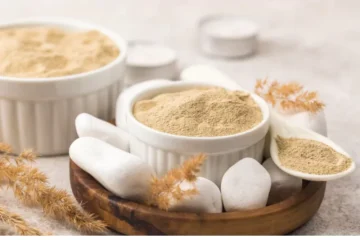Beginner-Friendly Rice Recipes Using Hing
Short Answer: Start with simple recipes like Hing Pulav, Hing Khichdi, and Hing Fried Rice for beginner-friendly hing rice dishes.
Long Answer:
- Hing Pulav: Cook basmati rice with vegetables, a pinch of hing, cumin, and ghee for a fragrant and flavorful dish. Hing Pulav is perfect for beginners as it is simple yet delicious. Garnish with fresh coriander leaves and serve with raita or a side salad for a complete meal.
- Hing Khichdi: Combine rice, lentils, and a touch of hing with turmeric, cumin, and ghee for a comforting, easy-to-make one-pot meal. Hing Khichdi is nutritious and quick to prepare. You can enhance the flavor by adding vegetables like carrots, peas, and potatoes. Serve with a dollop of ghee and a side of pickles for an authentic touch.
- Hing Fried Rice: Sauté cooked rice with vegetables, soy sauce, and a pinch of hing. Hing Fried Rice is a versatile and beginner-friendly dish that can be made with leftover rice and a few staple ingredients. Add protein sources like tofu, paneer, or chicken to make it a wholesome meal. Garnish with spring onions and enjoy!
Using Hing in Rice Dishes Without Overpowering the Flavor
Short Answer: Use a small pinch of hing in your rice dishes to enhance flavors without overpowering them.
Long Answer:
- Measure Carefully: Start with a small pinch (around 1/8 teaspoon) of hing to avoid overpowering the dish. You can always add more if needed. Remember, hing’s flavor is potent, and a little goes a long way.
- Even Distribution: Dissolve hing in warm water or oil before adding it to your dish to ensure even distribution and balanced flavor. This helps in dispersing its strong aroma and prevents any clumping, ensuring a well-rounded taste.
- Pair with Complementary Spices: Use hing alongside complementary spices like cumin, turmeric, and coriander to create a harmonious flavor profile in your rice dishes. These spices blend well with hing and enhance the overall taste without overpowering the dish.
- Gradual Addition: Add hing gradually during the cooking process, tasting as you go, to find the perfect balance without overwhelming the dish. This approach allows you to adjust the flavor to your preference and ensures that the dish remains enjoyable for everyone.
- Aromatic Tempering: Prepare a tempering with hing, ghee, and spices like cumin seeds, mustard seeds, and curry leaves. Pour this aromatic tempering over your rice dish to infuse it with a subtle yet delightful hing flavor.
Health Benefits of Adding Hing to Meals
Short Answer: Hing offers various health benefits, including aiding digestion, reducing bloating, and possessing anti-inflammatory properties.
Long Answer:
- Digestive Aid: Hing helps stimulate digestive enzymes, reducing indigestion, bloating, and gas. It is particularly beneficial for those with digestive issues. Consuming hing regularly can improve overall digestive health and enhance nutrient absorption.
- Anti-Inflammatory: Hing contains compounds with anti-inflammatory properties that may help reduce inflammation in the body, providing relief from conditions such as arthritis. Its natural anti-inflammatory effects make it a valuable addition to a balanced diet.
- Antimicrobial: Hing has antimicrobial properties that can help prevent infections and support a healthy immune system. Its ability to combat harmful bacteria and pathogens makes it an essential ingredient for maintaining overall health.
- Respiratory Health: Hing may help alleviate respiratory conditions like asthma and bronchitis due to its ability to thin mucus and relieve congestion. Including hing in your diet can improve respiratory function and provide relief from common respiratory ailments.
- Antioxidant Properties: Hing is rich in antioxidants that help combat free radicals in the body, reducing oxidative stress and protecting cells from damage. This can contribute to overall well-being and lower the risk of chronic diseases.
- Blood Pressure Regulation: Hing has been known to help regulate blood pressure levels due to its ability to relax blood vessels. Incorporating hing into your meals can promote cardiovascular health and reduce the risk of hypertension.
Using Hing in Instant Pot or Pressure Cooker Rice Recipes
Short Answer: Yes, hing can be used in instant pot or pressure cooker rice recipes for added flavor and aroma.
Long Answer:
- Easy Integration: Add hing to your instant pot or pressure cooker rice recipes at the beginning, along with other spices, to ensure even distribution and infusion of flavor. This method allows the hing to blend seamlessly with the other ingredients, enhancing the overall taste.
- Flavorful One-Pot Meals: Use hing in one-pot meals like Hing Pulav or Hing Khichdi for a convenient, flavorful dish with minimal cleanup. The pressure cooker intensifies the flavors, making the dish more aromatic and delicious.
- Quick Cooking: Hing enhances the flavor of quick-cooking rice recipes, making them more aromatic and delicious with minimal effort. Whether you’re making a simple rice dish or a more complex recipe, hing can elevate the taste in a short amount of time.
- Adaptable Recipes: Most traditional rice recipes can be adapted for instant pot or pressure cooker use by incorporating hing for an extra layer of flavor. Experiment with different rice varieties and ingredient combinations to create unique and tasty dishes.
- Enhanced Nutrient Retention: Cooking rice with hing in an instant pot or pressure cooker helps retain nutrients, making the meal healthier. The sealed cooking environment preserves the vitamins and minerals in the rice and other ingredients.
Best Rice Varieties to Use in Hing-Based Recipes
Short Answer: Basmati, jasmine, and brown rice are the best varieties for hing-based recipes.
Long Answer:
- Basmati Rice: Basmati rice’s long, fragrant grains make it an ideal choice for hing-based recipes like Hing Pulav and Hing Biryani. Its aromatic nature pairs well with hing’s distinct flavor, enhancing the overall dining experience. Basmati rice is known for its light and fluffy texture, making it a favorite in many Indian households.
- Jasmine Rice: Jasmine rice’s slightly sticky texture and delicate aroma complement hing-based dishes, enhancing their overall flavor and appeal. The subtle sweetness of jasmine rice blends beautifully with the savory taste of hing, creating a balanced and enjoyable dish.
- Brown Rice: Brown rice adds a nutty flavor and additional nutrients to hing-based recipes, making dishes like Hing Khichdi more wholesome and nutritious. Its high fiber content makes it a healthier alternative to white rice. Brown rice requires a longer cooking time, but its rich taste and health benefits make it worth the effort.
- Sona Masuri Rice: Sona Masuri rice is a medium-grain rice variety that is widely used in South Indian cuisine. Its light and aromatic qualities make it suitable for hing-based dishes like Hing Pulav and Hing Pongal. Sona Masuri rice cooks quickly and has a slightly chewy texture, making it versatile for various recipes.
- Sticky Rice: Sticky rice, also known as glutinous rice, is another excellent choice for hing-based recipes, especially in fusion dishes. Its sticky texture allows it to hold spices and flavors well, making each bite a burst of taste. Sticky rice is perfect for creating unique and flavorful dishes that stand out.
Tips for Choosing the Right Rice
- Consider the Dish: Choose the rice variety based on the dish you are preparing. For light and fluffy dishes, opt for basmati or jasmine rice. For hearty and wholesome recipes, go for brown or Sona Masuri rice.
- Flavor Pairing: Consider how the flavor of the rice will complement the hing and other spices in the dish. Aromatic rice varieties like basmati and jasmine are excellent for enhancing the overall taste.
- Texture Preference: Choose rice varieties that offer the desired texture for your dish. For example, sticky rice works well in dishes that require a cohesive texture, while basmati rice is ideal for fluffy and separated grains.
- Nutritional Value: Opt for rice varieties that provide additional nutrients. Brown rice is a great choice for adding fiber and essential minerals to your diet.
- Cooking Time: Consider the cooking time of the rice variety. While brown rice takes longer to cook, it offers a rich and hearty flavor. Quick-cooking varieties like jasmine and Sona Masuri rice are ideal for fast meal preparation.
Conclusion
Incorporating hing into your rice dishes can elevate their flavor and aroma, offering a unique twist on traditional recipes. By choosing the right rice varieties like basmati, jasmine, brown, and Sona Masuri rice, you can create delicious and wholesome meals that delight the senses. Experiment with different rice types and recipes to find the perfect combination that suits your taste and enhances your culinary creations.





